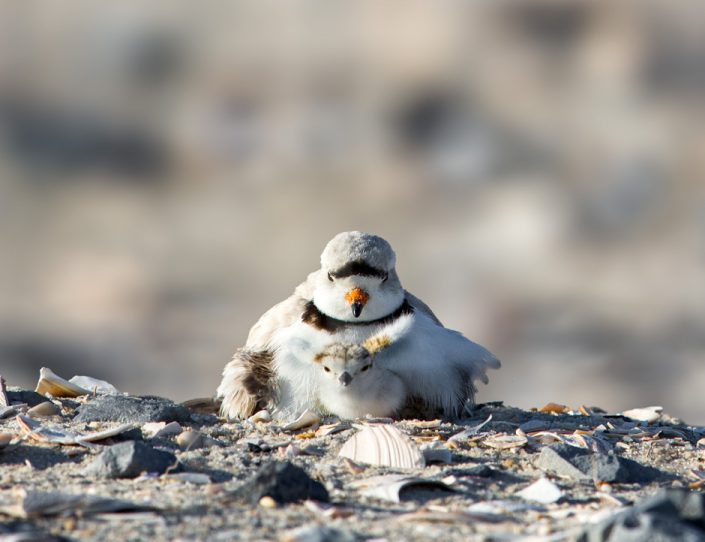A Year-end Snapshot of CWF’s Beach Nesting Bird Season
By Todd Pover, Senior Wildlife Biologist

Piping plovers may have left New Jersey for their wintering grounds months ago, but our staff continues to be busy assessing the results of the 2020 breeding season and making plans for ways to improve outcomes next year.
As we look back, one pattern is very clear; the piping plovers nesting at sites monitored and managed by CWF did very well in 2020. This includes 39 pairs at the Edwin B. Forsythe National Wildlife Refuge (Holgate and Little Beach Units), which CWF manages on behalf of the Refuge, as well as one pair at the National Guard Training Center in Sea Girt. Collectively, these pairs fledged 68 chicks or 1.70 chicks per pair, well above the federal recovery goal of 1.50 and at near record levels for the Refuge. These pairs represent just under 40% of the statewide total, as a result the high productivity at CWF-managed sites helped drive the state’s overall success. For a detailed look at how piping plovers did statewide, click here for the recently released state report.

There was also good news for piping plovers nesting at the Barnegat Light Habitat Restoration site in 2020. CWF, along with Rutgers University, was the lead in creating nearly 40 acres of highly suitable habitat along the inlet jetty, including the construction of a large foraging pond in February 2020. The pond is an especially important element of the restoration as it provides plovers a protected location to feed, rather than them being forced to use other areas that are highly disturbed by beachgoers. And according to the state piping plover report, the chicks that hatched at the site used the new pond 78% of the time and the nesting pairs recorded the highest productivity seen at Barnegat in five years.
Although highly endangered piping plovers command the majority of CWF’s time on the beach, our staff also has a hand in monitoring the state’s other at-risk beach nesting bird. In 2020, that included the state’s two largest least tern colonies at Holgate, one of just four known black skimmer colonies, also at Holgate, and a third (50 of 152) of the nesting pairs of American oystercatchers that are monitored in New Jersey. Unfortunately, these species were not as successful as CWF’s plovers in 2020, to see how they fared, click here for the state report.
This was an especially challenging year for our beach nesting bird project, like all our partners in the state and across the region, we had to adapt to new methodologies and safety protocols in light of Covid-19. But “beach nesters” are used to adversity, we understand that it is a long road to recovery for our species. 2020 gave us some great successes to build on, as well as some setbacks to learn from; we can’t wait to get back out on the beach when our beach nesting birds return to New Jersey to nest in the spring.
Todd Pover is a biologist with Conserve Wildlife Foundation and heads up the Beach Nesting Bird Project.
Learn more about the CWF Beach Nesting Bird Project and read the full 2020 beach nesting bird and piping plover reports here.
Discover more from Conserve Wildlife Foundation of NJ
Subscribe to get the latest posts sent to your email.
Leave a Comment
There is no link to click on for the state report.
“Unfortunately, these species were not as successful as CWF’s plovers in 2020, to see how they fared, click here for the state report.
Karl Soehnlein…those links are active now, please try again.
Comments are closed.